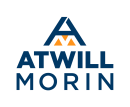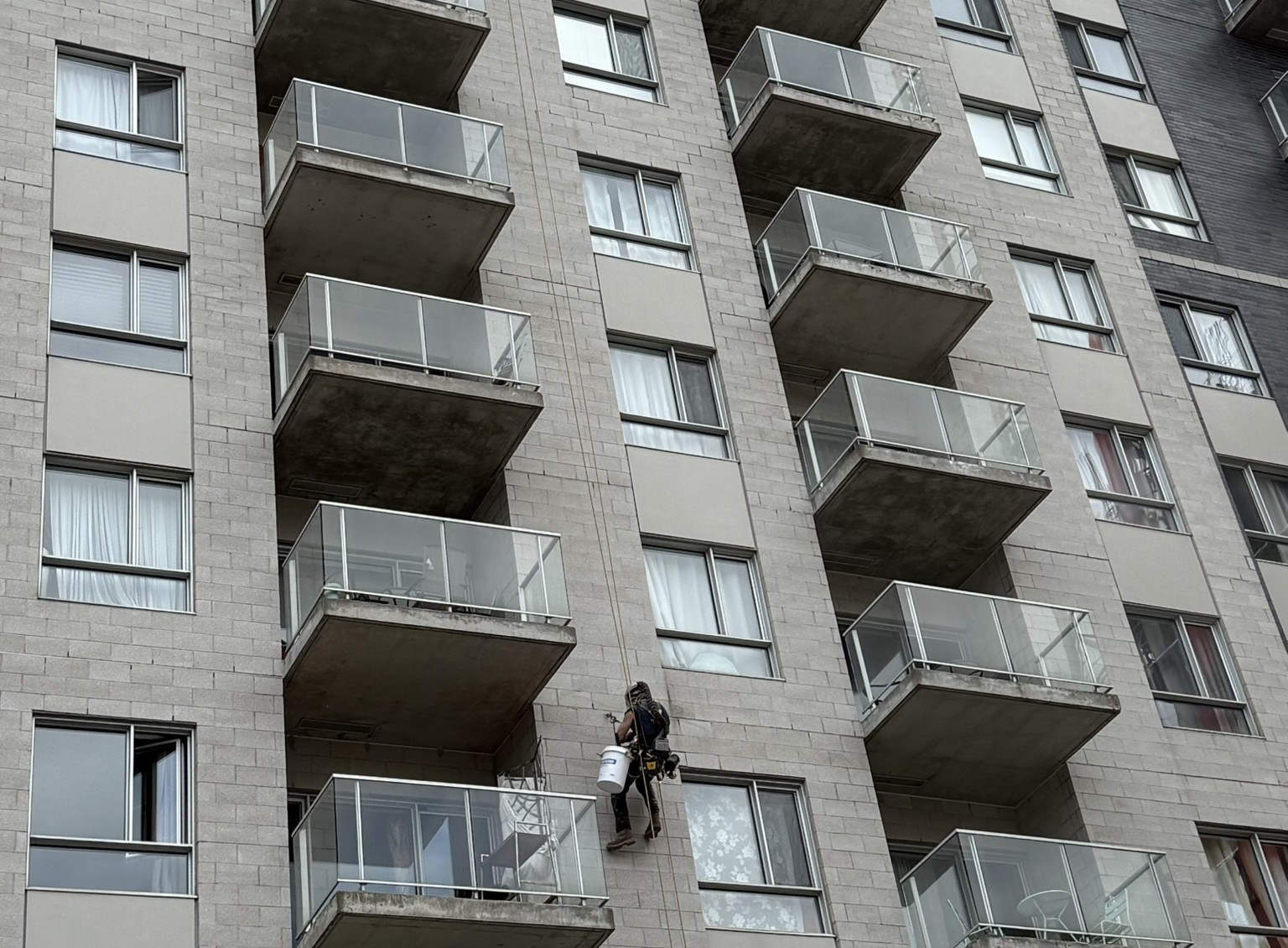From the very beginning, the Atwill-Morin team followed the intervention plan established by the consulting firm with precision. Since the damaged blocks and bricks had already been identified, the rope access technicians were able to work in a targeted and methodical manner.
The project site, located in a densely populated urban area, presented an added logistical challenge: several other construction projects were underway on nearby buildings, further limiting available ground space. The team therefore chose to begin with the most accessible façade, then adjusted its strategy for the remaining three sides of the tower based on space constraints and surrounding conditions.
To maximize efficiency, the rope technicians used green stickers to mark intervention zones on the façade from the roof. This visual mapping system allows them to target areas for repair more precisely, without wasting time, a particularly useful technique in rope work, where the perspective is quite different from that offered by scaffolding, where defects are visible at eye level.
Each workday begins with a mandatory safety meeting. All potential hazards, such as heat exposure, allergies, and more, are discussed. Preventive measures are recorded, emergency contact information is confirmed, and all team members sign the safety log. This daily protocol ensures a secure and well-controlled work environment.
On this project, the interventions focused primarily on:
- Repointing: Several mortar joints showed visible cracks, often identifiable by fissures running through the bricks or blocks. The rope access team worked in stages, removing the old mortar by grinding, carefully cleaning the joints, and applying fresh mortar.
- Caulking: Some sealants were cracked or deteriorated. They were carefully removed and replaced to restore the façades’ waterproofing integrity.
- Replacement of cracked blocks: Damaged masonry blocks were removed and replaced with new blocks, in keeping with the building’s original appearance.
- Treatment of exposed rebar: Over time, some structural reinforcements had become visible and started to rust, causing visible streaks on the façades. To address the issue, the team cleaned the exposed steel with a wire brush, then applied a protective product (Armatex) to prevent future deterioration of the elements.
Throughout the project, photographs were taken before, during, and after each intervention. This thorough documentation ensured full traceability and confirmed that every item in the plan was executed as intended.
Thanks to these well-established methods, Atwill-Morin successfully completed the project with both efficiency and transparency, a level of diligence reflected in the client’s satisfaction and the continued trust of its partners.

